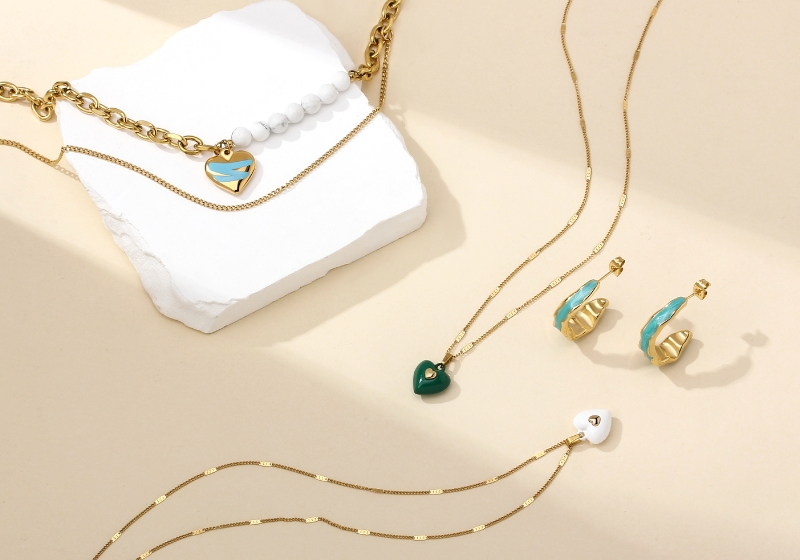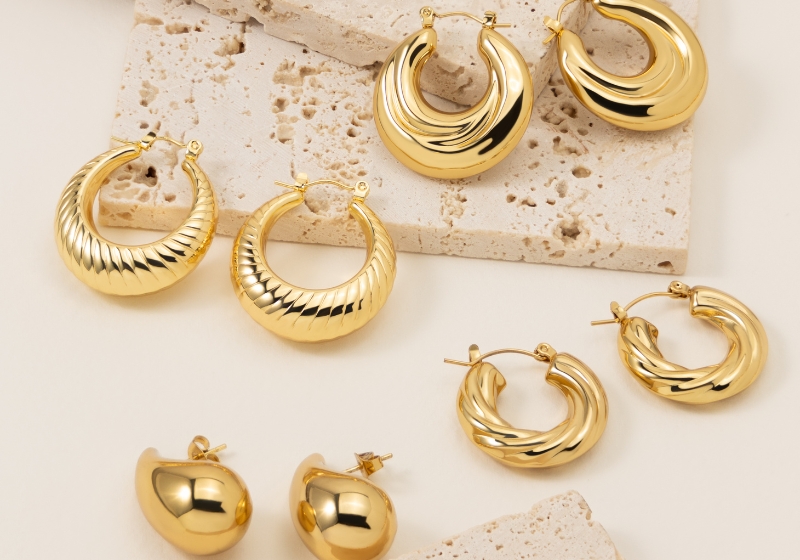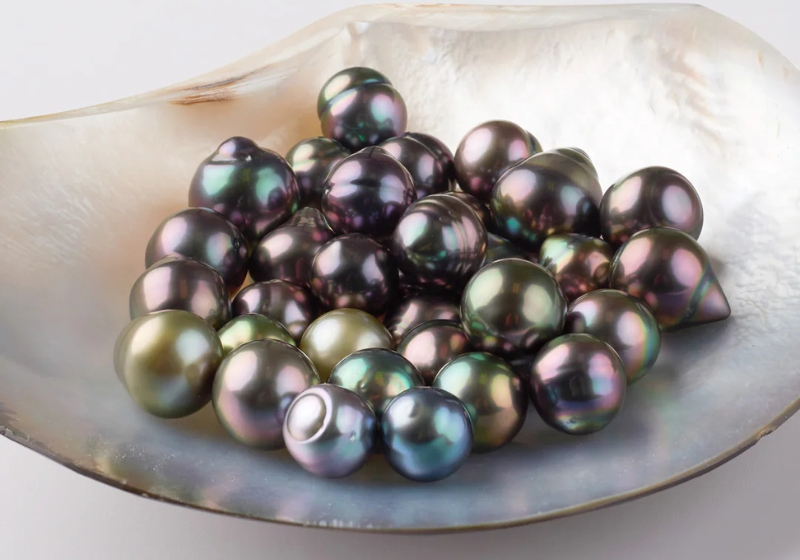The fashion world is filled with several jewelry made from various metals. While some are durable, others tarnish after a few weeks of use. Evidently, tarnish free jewelry pieces are made of quality metals and unique surface coatings that are highly resistant to corrosion or rust.
Are you looking for jewelry that doesn’t tarnish? Look no further because in this guide, we will share with you various kinds of jewelry that don’t tarnish.
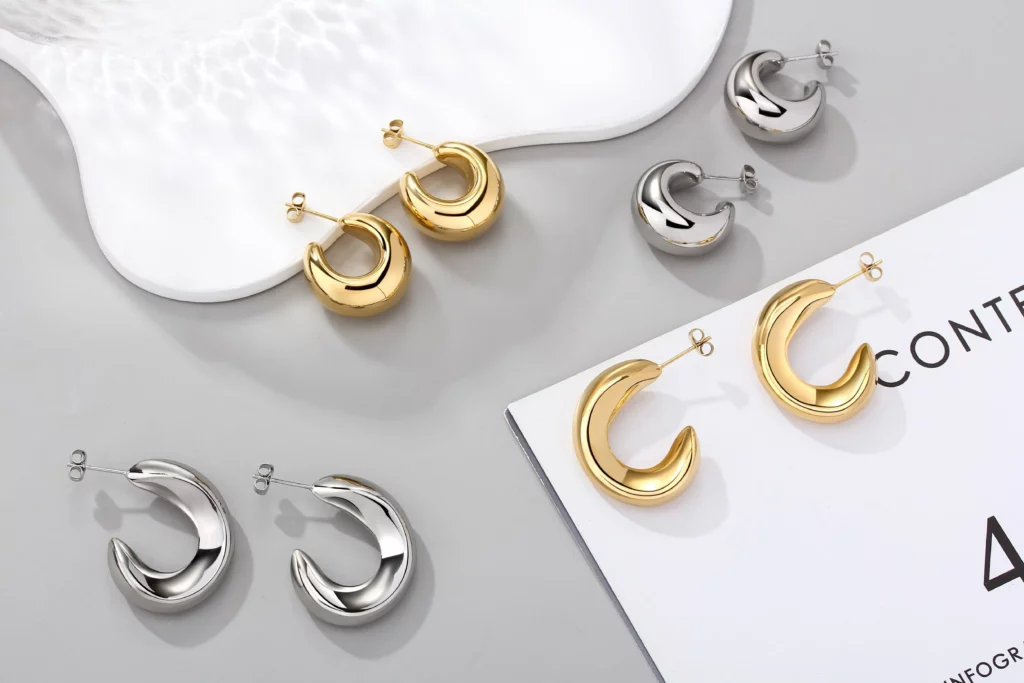
What Causes Jewelry to Tarnish?
Tarnishes on jewelry appear in the form of dark or brown discoloration and they’re usually caused by:
- Exposure to Air: When a piece of jewelry is exposed to air, its metal content and the oxygen present in the air sparks a chemical reaction that eventually leads to discoloration and tarnish.
- Exposure to Chemicals: Common household products like bleach, detergent, perfume, or hair spray contain mild chemicals that damage jewelry.
- Exposure to Sweat and Water: When we sweat, the body secretes amino acid which contains sulfur. As the sulfur mixes with humidity, oxidation is increased, which eventually causes jewelry to tarnish.
What Does Tarnish Free Mean?
Tarnish free jewelry meaning has to do with the overall durability and longevity of jewelry.
The term “tarnish free” is used to describe metals that are not easily affected by oxidation. Jewelries made from such metals are highly durable and they sometimes possess coatings that prevent them from changing color under normal conditions.
What Metal Does Not Tarnish Naturally?
There are a few metals that do not tarnish naturally. They include; stainless steel, solid gold, titanium, platinum, and palladium. These metals stimulate protective layers of chromium oxide when exposed to oxygen or moisture.
What Jewelry Does Not Tarnish?
Tarnish proof jewelry is often made of noble metals or other types of metals that do not corrode easily. Still wondering what type of jewelry doesn’t tarnish? Here are a few to mention:
Stainless Steel Jewelry
Is stainless steel good for jewelry material? Yes, it is.
Stainless steel is a combination of 3 major metals: chromium, carbon, and iron. For a metal to pass as stainless steel, it must contain a minimum of 10.5% chromium, not more than 1.2% carbon, and iron making the majority of the alloy (50-85%).
Weighing the pros and cons of stainless steel jewelry, it is evident they are highly durable and naturally resistant to rust, scratch, and oxidation. In terms of price, stainless steel is quite cheap when compared to other non tarnish jewelry. However, it is less flexible and takes longer production time.
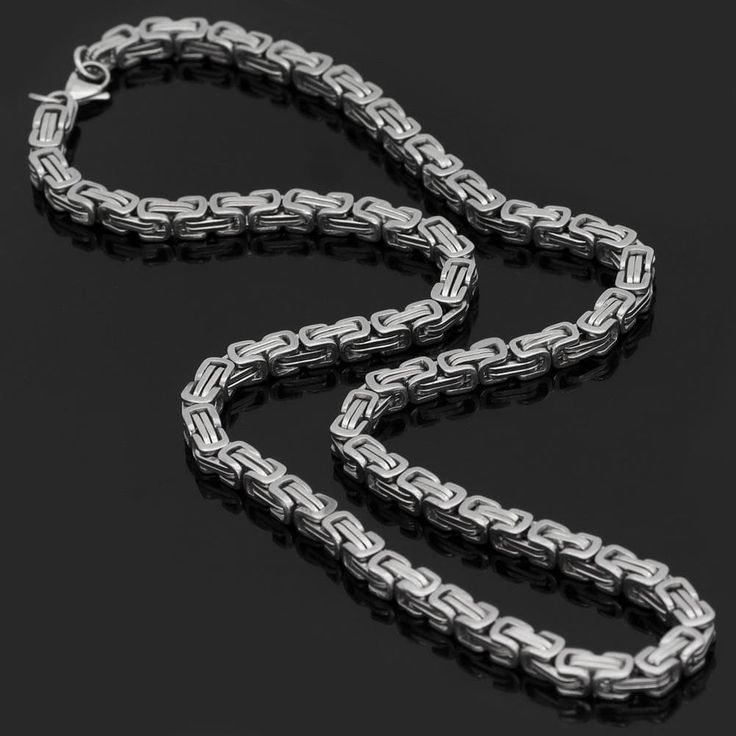
Source: Pinterest
Titanium Jewelry
Does titanium tarnish or rust? No, titanium is a strong, lightweight metal used to create several types of jewelry. It is highly durable and can be worn frequently without the fear of tarnish or corrosion.
Amongst all jewelries, titanium has the highest ratio of tensile strength to density; it does not crack, break, nor flex out of shape. It can be worn by people with sensitive skin and its price is affordable due to its abundance. However, titanium jewelry looks dull in appearance when compared to some other metals like silver and copper.

Source: Google
Solid Gold Jewelry
Solid gold is one of the most valuable types of jewelry. It normally consists of 100% pure gold and its timeless nature makes it suitable for making luxury jewelries.
This type of jewelry is resistant to tarnish and can be used for several years as long as it is properly cared for. Solid gold stands out as one of the best metals for jewelry, possessing intrinsic features that make it a valuable heirloom. However, their prices are off the roof when compared to other metals.
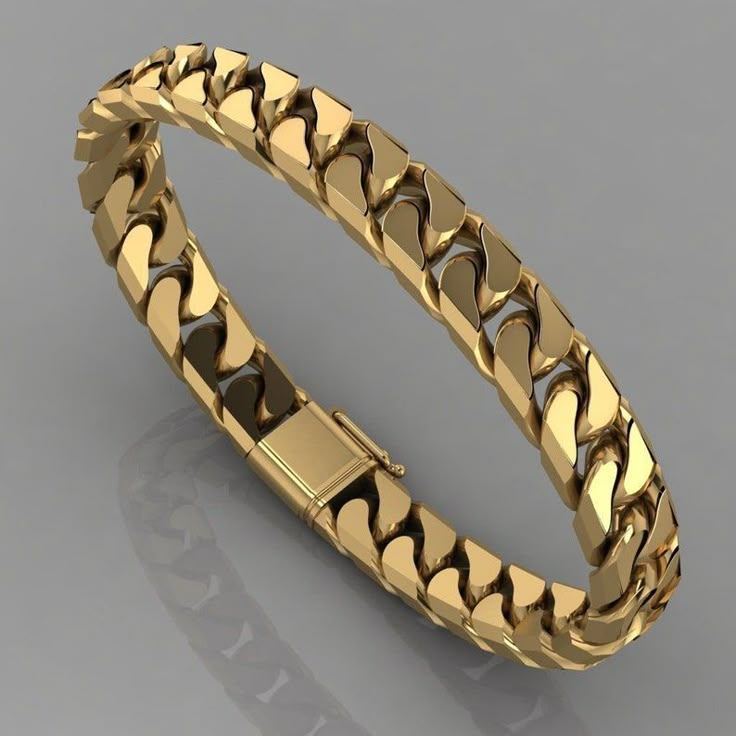
Source: Pinterest
Platinum Jewelry
Platinum is one of the elements that makes up the Platinum-group Metals (PGMs). Jewelries made from this noble metal must possess at least 95% purity to pass the authenticity test.
It is long-lasting and requires less frequent maintenance because it is capable of retaining its white finish, even when exposed to severe conditions. This metal is hard to find, hence why it’s priced higher than gold and other metals. Also, it’s very tough and cannot be easily fabricated into intricate pieces.
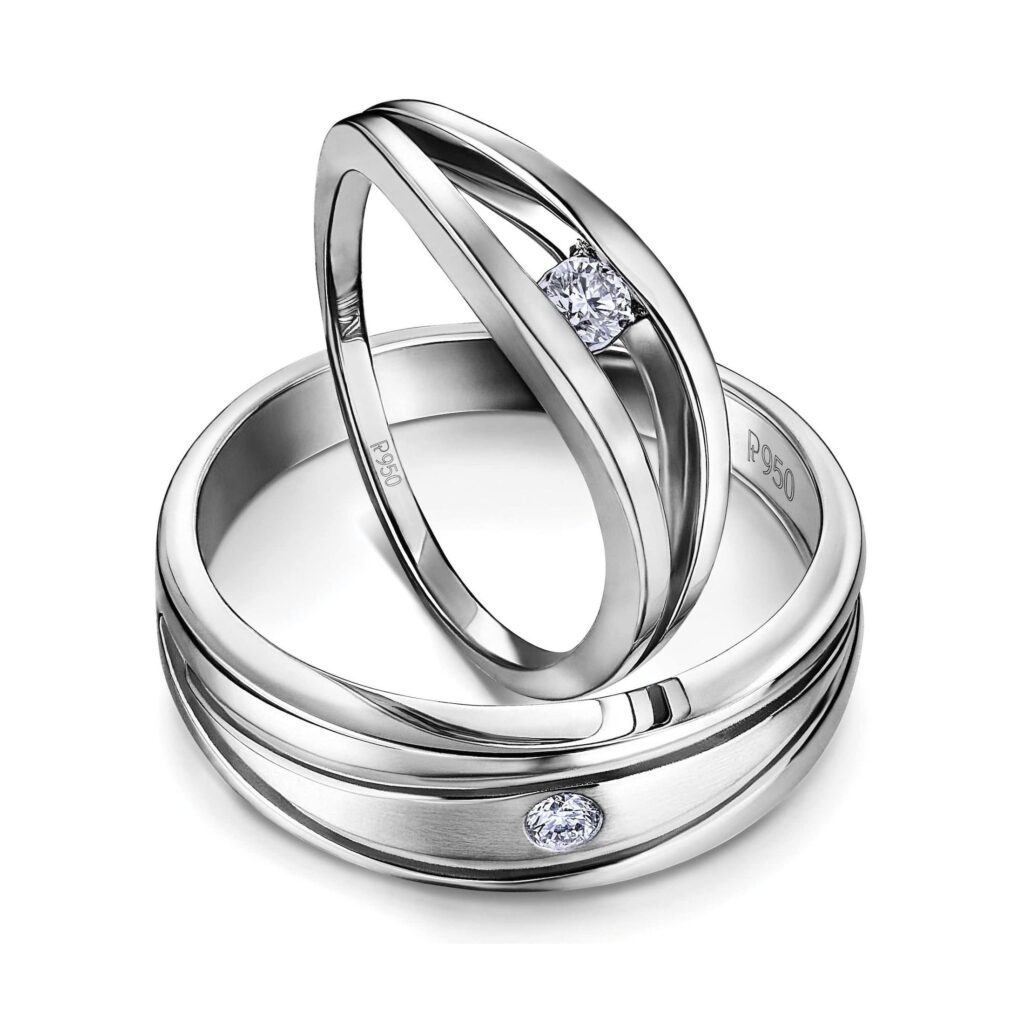
Source: Google
Palladium Jewelry
Palladium is a metal class under the same group as platinum, hence why they are similar in appearance. It is a pure metal that contains an alloy of 95% palladium and 5% ruthenium.
Does palladium jewelry tarnish? Palladium jewelry is lightweight and highly resistant to tarnish, scratch, or corrosion, making it convenient to wear. This metal is just as expensive as platinum and requires professional expertise to work on.
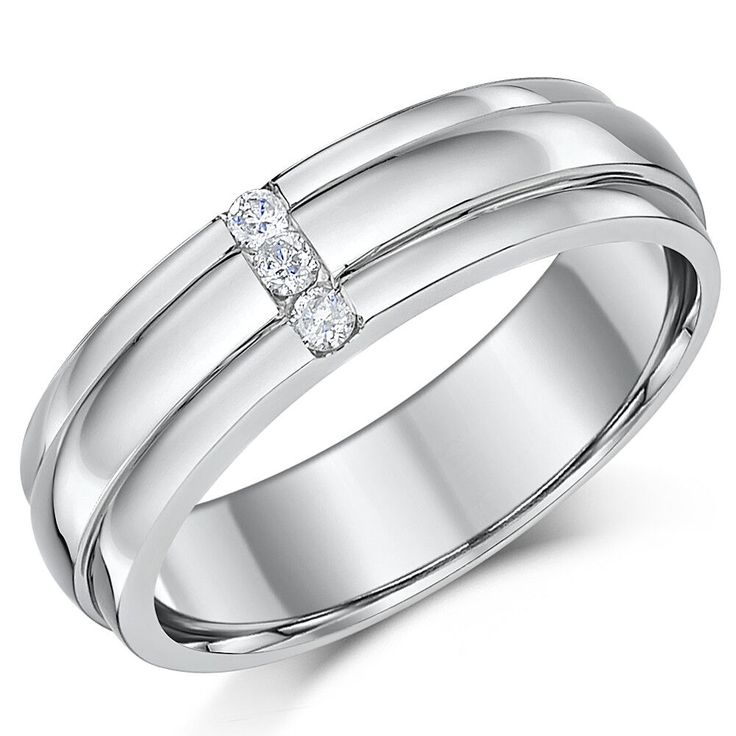
Source: Pinterest
Jewelry with Tarnish Resistant Coating/Plating
Tarnish resistant coating or plating is primarily applied to boost the durability of a jewelry piece. Below are the major tarnish resistant coatings used for jewelries:
PVD Coating Jewelry
PVD (Physical Vapor Deposition) is an advanced coating technique used to embed layers of metallic particles onto jewelry surfaces to create additional texture and durability. This method is quite similar to titanium nitride coating for jewelry. It involves placing the jewelry in an airtight vacuum chamber through which the coating is applied.
PVD coating jewelry is highly tarnish-resistant due to the even distribution of thick layers of metal across the jewelry surface. It plays a major role in boosting a jewelry’s useful life and aesthetic value.

Jewelry with Rhodium Plating
Rhodium is a naturally hard metal that is absolutely nickel-free. Once it’s plated on a piece of jewelry, it forms a protective layer that shields the metal underneath from tarnish or rust.
Rhodium plating on jewelry increases its surface hardness, creating more resistance to wear or scratch. It is often applied on silver and white gold jewelry to achieve a mirror-like surface which is highly sought after by jewelers.
Jewelry with E-coating
E-coating (Electrocoating) is a high-tech method, which involves using electricity to attach layers of metal coating to jewelry. The jewelry is first submerged into a ceramic solution before an electric current is passed across its surface to create a uniform coating on all angles.
E-coating on jewelry shields the underlying metal and protects it from chemicals that can speed up oxidation process. Jewelry with e-coating generally lasts 3 months longer than those without e-coating.
What Gold Doesn’t Tarnish?
Gold jewelry that doesn’t tarnish easily are usually products of pure gold, gold filled, and PVD gold plating. Non tarnish gold jewelry pieces of this caliber are highly resistant to water, chemical, and oxidation.
Pro Tips for Small Brands Looking for Affordable and Best Tarnish Free Jewelry
Before selecting jewelry types for your brand, it is imperative to look out for jewelry that are tarnish free yet affordable, with a touch of aesthetic value. Below are a few to select from:
Go for Stainless Steel with PVD Coating
Stainless steel coated with PVD creates one of the best anti tarnish coating for jewelry. PVD coating is better than electroplating for stainless steel jewelry in terms of adhesion. It creates a durable and long lasting layer between the stainless steel and the coated metal. This method is revered for its scratch resistance and enhanced appearance it gives a jewelry.
Go for Silver Jewelry with Rhodium Plating
In order to perfectly blend natural colors with high level durability, silver jewelry is often coated with rhodium plating or e-coating. Apart from the long lasting effect they introduce, prices of rhodium plated and e-coated silver jewelry are relatively cheaper compared to other jewelry types.
Go for “Semi Gold Vermeil” Jewelry
Achieve great results with alternatives like brass coated with 2.5 microns of 18K gold or silver coated with 1.5 microns of 18K gold, which offer 1-2 years of color retention and are cost-effective. This solution offers layers of gold that surpass traditional gold plating in terms of durability and thickness.
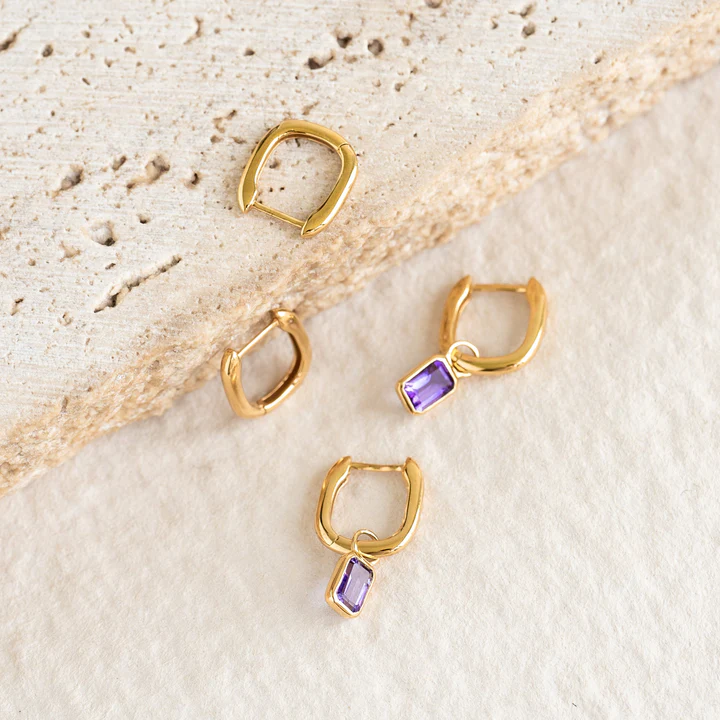
Source: Google
How to Keep Jewelry From Tarnishing?
Tarnishing is applicable to jewelry especially when they are not managed properly. Follow the tips below to keep your jewelry from tarnish.
Store Properly
Jewelry should be stored in a cool dry place, away from direct sunlight and humidity. To avoid surface scratches, they should be kept separately in a jewelry box, soft pouch, or ziplock bag.
Clean Regularly
To maintain its shine, the surface should be wiped with a soft polishing cloth and mild soap. This prevents dirt and tarnish from building up.
Avoid Chemicals
Jewelry often reacts when exposed to chemicals, therefore, it is advisable to take them off before swimming, showering, or engaging in activities that may expose the jewelry to sweat or chemicals.
FAQs
What Jewelry Can You Wear All The Time?
Jewelry made of tarnish free metals like stainless steel, titanium, solid gold, platinum, and palladium can be worn all the time.
What is the Best Tarnish Free Jewelry?
Stainless steel with PVD coating is the most affordable and best solution for tarnish resistant jewelry.
Does Sterling Silver Tarnish?
Yes, sterling silver tarnishes over time because it contains a small percentage (7.5%) of copper.
Does Stainless Steel Tarnish?
Stainless steel jewelry is the most durable of all metals and will not tarnish easily. However, it can eventually tarnish.
Does Stainless Steel Jewelry Rust?
No, stainless steel is a rust free jewelry. Its alloy composition protects it from rusting or corroding.
What Jewelry Doesn’t Tarnish in Water?
Stainless steel jewelry will not tarnish easily in water. It is used to create waterproof tarnish free jewelry, maintaining its shine and luster as long as water contact is minimal.
Conclusion
With the amount of jewelry in circulation, your best shot at getting the ones that are tarnish resistant is to reach out to a professional custom jewelry manufacturer. Tarnish free jewelry is usually cut from high-end metals like stainless steel, titanium, solid gold, platinum, and palladium.

